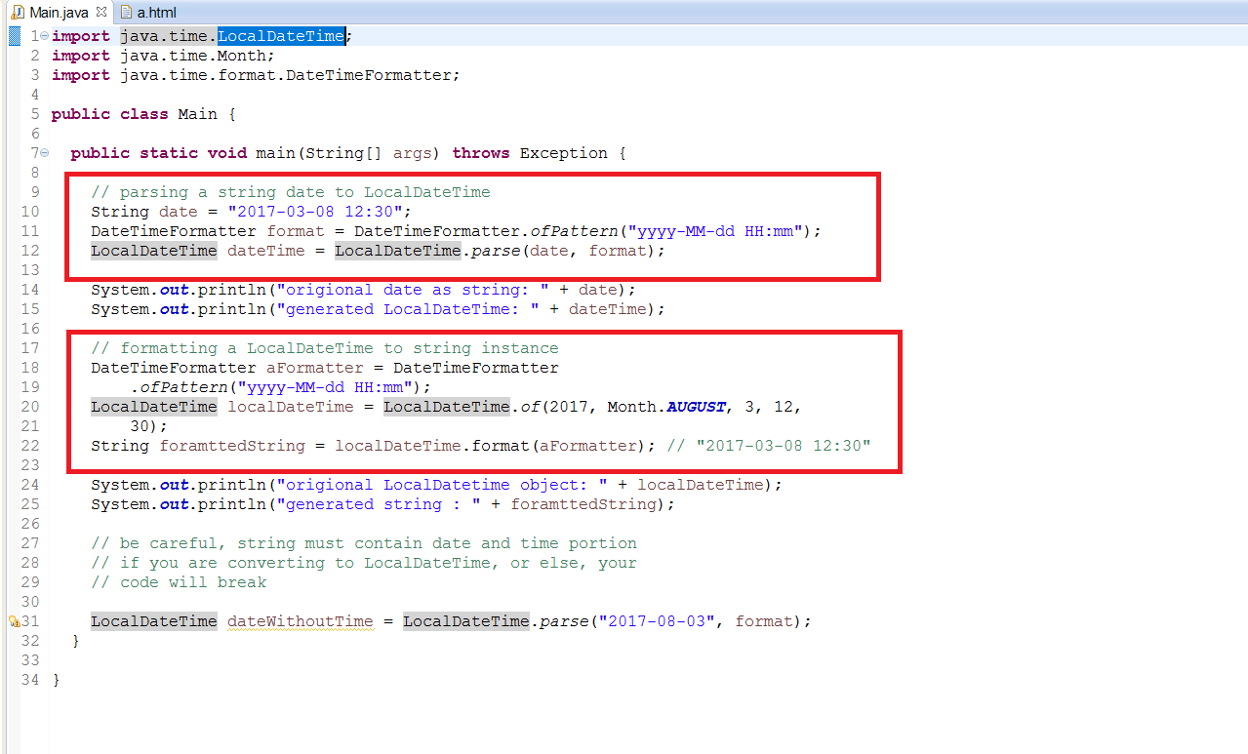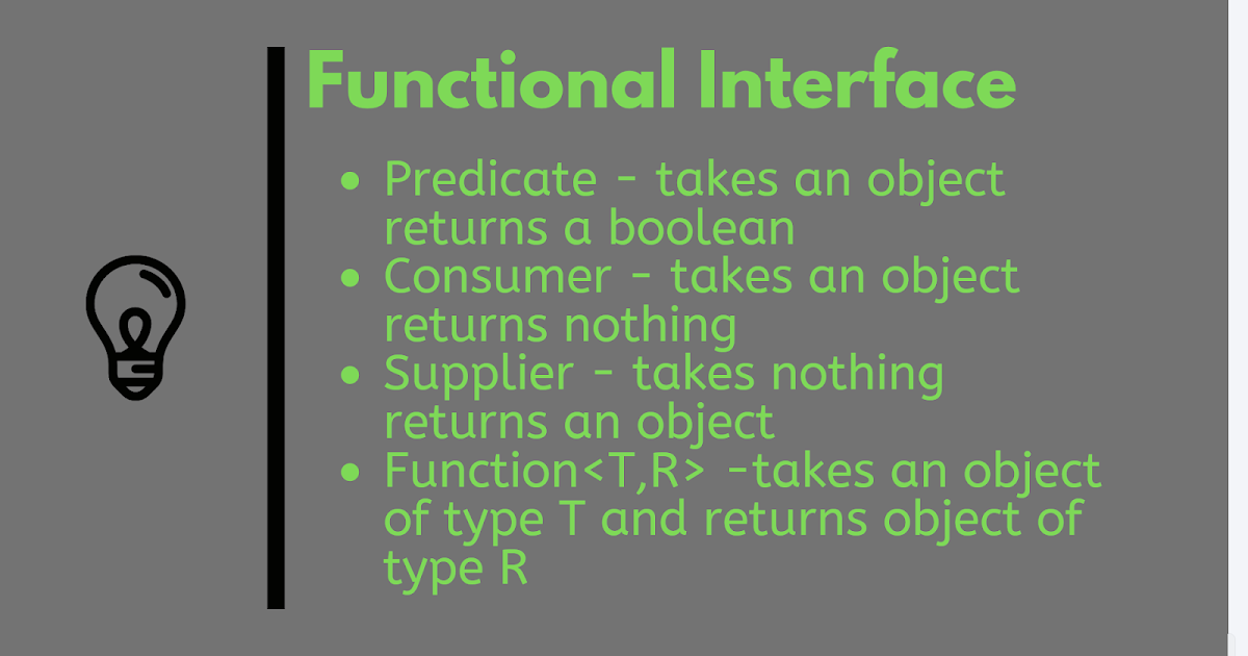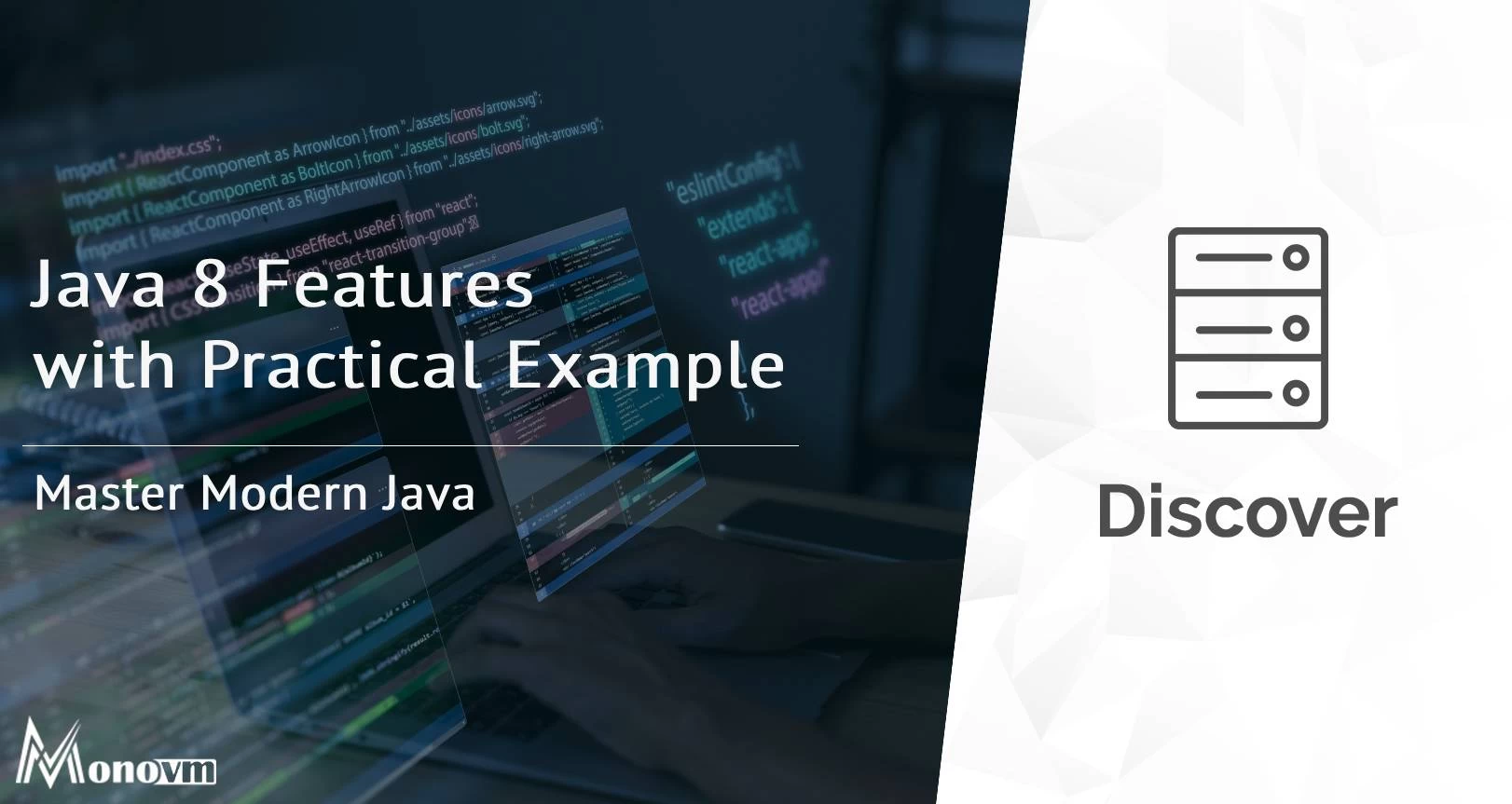List of content you will read in this article:
Java 8, released in March 2014, marked a significant milestone in the evolution of the Java programming language. It brought a plethora of new features and enhancements that revolutionized the way Java developers write code. In this article, we will dive into the world of Java 8, exploring its key features, and demonstrating how these additions can transform your code and boost your productivity.
What is Java 8?
Java 8, also known as "JDK 1.8" or "Java SE 8," is a major release of the Java programming language and the Java Virtual Machine (JVM). It introduced several groundbreaking features, making Java more expressive, efficient, and aligned with modern programming paradigms. These features empowered developers to write code that is not only concise but also more maintainable and readable.
Why is Java 8 Important?
Java 8 marked a pivotal moment in software development, reshaping how developers approached common programming tasks. One of its standout features was lambda expressions, enabling the creation of more concise and expressive code that closely resembled natural language. This not only improved code readability but also enhanced its maintainability.
Elevate Your Programming Skills with Our Language Recommendations
Furthermore, Java 8 introduced a stream processing API that harnessed the power of multi-core processors for efficient parallel data processing, resulting in significant performance gains, especially with large datasets. Overall, Java 8's impact on the software development landscape was transformative, making it essential knowledge for developers of all levels.
New Features in Java 8
Java 8 ushered in a wave of innovation with a set of compelling features that transformed the way Java developers write code. These features brought enhanced readability, maintainability, and performance to Java applications. In this section, we will explore these features in detail, providing examples and illustrating the advantages of incorporating them into your Java projects.
1. Lambda Expressions
Lambda expressions are a cornerstone of Java 8, introducing a more concise and expressive way to write code. They enable developers to create anonymous functions, making functional programming tasks like filtering, mapping, and reducing collections more straightforward. The key benefits of lambda expressions include:
- Concise Code: Lambda expressions allow you to write code with fewer lines, reducing verbosity.
- Readability: They enhance code readability by focusing on the "what" rather than the "how."
- Functional Programming: Lambda expressions promote functional programming paradigms in Java.
Examples of using lambda expressions
Suppose you have a list of integers, and you want to filter out even numbers using a lambda expression:
List<Integer> numbers = Arrays.asList(1, 2, 3, 4, 5, 6, 7, 8, 9, 10); List<Integer> evenNumbers = numbers.stream() .filter(n -> n % 2 == 0) .collect(Collectors.toList());
2. Method References
Method references provide a concise way to refer to methods without invoking them explicitly. They enhance code readability and maintainability by eliminating boilerplate code. Method references are particularly beneficial when working with functional interfaces.
Benefits of Method References:
- Code Clarity: They make code more readable by directly referencing methods.
- Reduced Redundancy: Boilerplate code is reduced, leading to cleaner and more maintainable code.
Examples of using method references
Consider a list of strings that you want to print to the console:
List<String> fruits = Arrays.asList("Apple", "Banana", "Cherry"); fruits.forEach(System.out::println);

3. Functional Interfaces
Functional interfaces are interfaces that contain a single abstract method. They serve as the foundation for lambda expressions in Java 8. Functional interfaces provide a clear and structured way to define behavior. While the @FunctionalInterface annotation is optional, it's recommended for indicating a functional interface.
Advantages of Functional Interfaces:
- Clear Intent: They clearly define the intent of a single abstract method.
- Leveraging Lambdas: Functional interfaces enable the use of lambda expressions for behavior implementation.
Examples of using functional interfaces
@FunctionalInterface interface Calculator { int operate(int a, int b); }
4. Streams
Streams are a powerful addition to Java 8, offering an efficient and expressive way to process collections of data. They enable operations like filtering, mapping, and reducing collections with ease. The benefits of using streams include:
- Efficiency: Streams can optimize data processing, including parallel execution for improved performance.
- Declarative Syntax: They provide a declarative syntax for expressing complex data manipulations.
- Readability: Streams make code more readable by focusing on high-level operations.
Examples of Using Streams
Let's calculate the sum of even numbers from a list of integers:
List<Integer> numbers = Arrays.asList(1, 2, 3, 4, 5, 6, 7, 8, 9, 10); int sum = numbers.stream() .filter(n -> n % 2 == 0) .mapToInt(Integer::intValue) .sum();
5. Date and Time API
Java 8 introduced a modern and efficient Date and Time API under the java.time package. This API simplifies working with dates and times, addressing many of the challenges that existed in previous versions. Key advantages of the Date and Time API include:
- Simplicity: The API offers a straightforward and intuitive way to handle dates and times.
- Precision: It supports nanosecond precision for accurate time calculations.
- Immutability: Date and time objects are immutable, ensuring thread safety.
Examples of using the new date and time API
LocalDate today = LocalDate.now(); LocalTime now = LocalTime.now(); LocalDateTime dateTime = LocalDateTime.of(today, now);

6. Other New Features
Java 8 introduced several other noteworthy features, enhancing code structure and functionality. These include:
- Default Methods in Interfaces: Interfaces can now have non-abstract (default) methods, promoting code reuse and backward compatibility.
- Static Methods in Interfaces: Interfaces can include static methods, providing utility functions for implementations.
- Optional Class: The Optional class helps handle potential null values more elegantly, reducing the risk of null pointer exceptions.
In the subsequent Java 8 tutorial sections, we will dive deeper into each of these features, providing real-world examples to illustrate their practical usage.
Benefits of Using Java 8 Features
Now, let's explore the Java 8 benefits for your projects:
- Enhanced Readability: Lambda expressions and method references allow you to write more concise and expressive code. This improves code readability, making it easier to understand and maintain.
- Increased Productivity: Java 8 features enable developers to accomplish tasks more efficiently, reducing the amount of boilerplate code required. This increased productivity translates to faster development cycles.
- Functional Programming Capabilities: Java 8's functional interfaces and lambda expressions open the door to functional programming paradigms. You can leverage these features for tasks like filtering, mapping, and reducing collections with ease.
- Streamlined Date and Time Handling: The new Date and Time API simplifies working with dates and times, eliminating many of the pitfalls and complexities of earlier versions. This results in more robust and accurate date and time calculations.
- Improved Performance: Java 8's stream API allows for efficient processing of collections, making it possible to perform operations in parallel. This can significantly improve the performance of data-intensive applications.
- Backward Compatibility: Java 8's default methods in interfaces ensure that code written for earlier versions of Java remains compatible. You can gradually migrate your codebase to Java 8 without major disruptions.
Examples of using Java 8 features
To illustrate how these Java 8 features work in practice, let's dive into some real-world Java 8 code examples. We'll explore scenarios where lambda expressions, method references, streams, and the Date and Time API can be applied to solve common programming challenges.

Lambda Expressions
Lambda expressions allow for concise and expressive code. For instance, you can use a lambda expression to sort a list of strings:
List<String> names = Arrays.asList("John", "Alice", "Bob", "Eve"); Collections.sort(names, (a, b) -> a.compareTo(b));
In this example, (a, b) -> a.compareTo(b) is a lambda expression that defines the comparison logic for sorting the list of names. It's a shorter and more readable alternative to writing a separate Comparator class.
Method References
Method references make your code cleaner. Consider this example using a method reference to print elements of a list:
List<Integer> numbers = Arrays.asList(1, 2, 3, 4, 5); numbers.forEach(System.out::println);
Here, System.out::println is a method reference to the println method of the System.out object. It simplifies the code and improves readability.
Functional Interfaces
Functional interfaces often pair well with lambda expressions. Take the Predicate functional interface, for example, which can be used to filter a list:
List<String> fruits = Arrays.asList("Apple", "Banana", "Cherry", "Date"); List<String> filteredFruits = filterList(fruits, s -> s.startsWith("B"));
In this case, s -> s.startsWith("B") is a lambda expression that defines the condition for filtering. The filterList method accepts a functional interface, making it versatile for different filter criteria.

Streams
Streams provide a powerful way to manipulate collections. Here's an example of using a stream to find the sum of even numbers:
List<Integer> numbers = Arrays.asList(1, 2, 3, 4, 5, 6); int sum = numbers.stream() .filter(n -> n % 2 == 0) .mapToInt(Integer::intValue) .sum();
In this code, we use the stream method to create a stream from the list of numbers. Then, we chain operations like filter to select even numbers, mapToInt to convert them to int, and sum to calculate the sum.
Date and Time API
Java 8's Date and Time API simplifies working with dates and times. Here's an example of creating a date using the new API:
LocalDate today = LocalDate.now();
This single line creates a LocalDate object representing the current date. The Date and Time API provides powerful methods for further date and time manipulation.
These examples showcase the power and simplicity that Java 8 features bring to your code, making it more efficient and readable.
Common Mistakes to Avoid When Using Java 8 Features
While Java 8 introduced powerful features to the language, it's essential to use them judiciously to avoid common pitfalls. These features can significantly enhance your code, but misusing them can lead to less maintainable and error-prone applications. Here are some common mistakes to steer clear of when working with Java 8 features:
1. Overusing Lambda Expressions
Mistake: Using lambda expressions excessively or unnecessarily.
Why It's a Problem: Lambda expressions are a valuable tool, but applying them to every part of your codebase can lead to code that's hard to read and understand, especially for developers unfamiliar with functional programming concepts.
Jave 8 Best Practices: Reserve lambda expressions for situations where they genuinely improve code clarity and maintainability. Use traditional methods when they are more appropriate.
2. Neglecting Type Safety
Mistake: Not specifying types in lambda expressions or stream operations.
Why It's a Problem: Java is a statically typed language, and while type inference works well in many cases, omitting types in your code can make it less readable and error-prone.
Best Practice: Be explicit about types when necessary, especially in complex expressions. This improves code readability and reduces the likelihood of type-related errors.
3. Misusing Streams
Mistake: Applying streams to small collections or using them where simpler approaches suffice.
Why It's a Problem: Streams are a powerful tool for data manipulation, but they come with some performance overhead. Using them unnecessarily on small data sets can lead to reduced performance and increased complexity.
Best Practice: Use streams when dealing with large data sets or when the benefits of declarative code outweigh the performance considerations. For smaller collections, consider using traditional loops and operations.
4. Ignoring Exception Handling
Mistake: Neglecting proper exception handling within lambda expressions or stream operations.
Why It's a Problem: Unhandled exceptions can lead to unpredictable program behavior and debugging challenges.
Best Practice: Always handle exceptions appropriately within lambda expressions or stream operations. Consider using try-catch blocks or handling exceptions using the .exceptionally() method when working with CompletableFuture.
5. Using Method References Unnecessarily
Mistake: Using method references excessively or in situations where they don't improve code readability.
Why It's a Problem: While method references can enhance code clarity, using them inappropriately can make code harder to understand, especially for developers not familiar with this feature.
Best Practice: Use method references when they genuinely improve code readability. In some cases, it might be more explicit to use a lambda expression or a direct method call.
Conclusion
Java 8 brought a wealth of new features and enhancements that have revolutionized the way Java developers write code. Lambda expressions, method references, functional interfaces, streams, the Date and Time API, and other improvements have made Java code more expressive and efficient.
As you explore these features and apply them in your projects, you'll discover how they can simplify complex tasks and improve the readability of your code. Embrace the Java 8 cheat sheet and its capabilities, and you'll be well-equipped to confidently tackle modern software development challenges.

Hello, everyone, my name is Lisa. I'm a passionate electrical engineering student with a keen interest in technology. I'm fascinated by the intersection of engineering principles and technological advancements, and I'm eager to contribute to the field by applying my knowledge and skills to solve real-world problems.